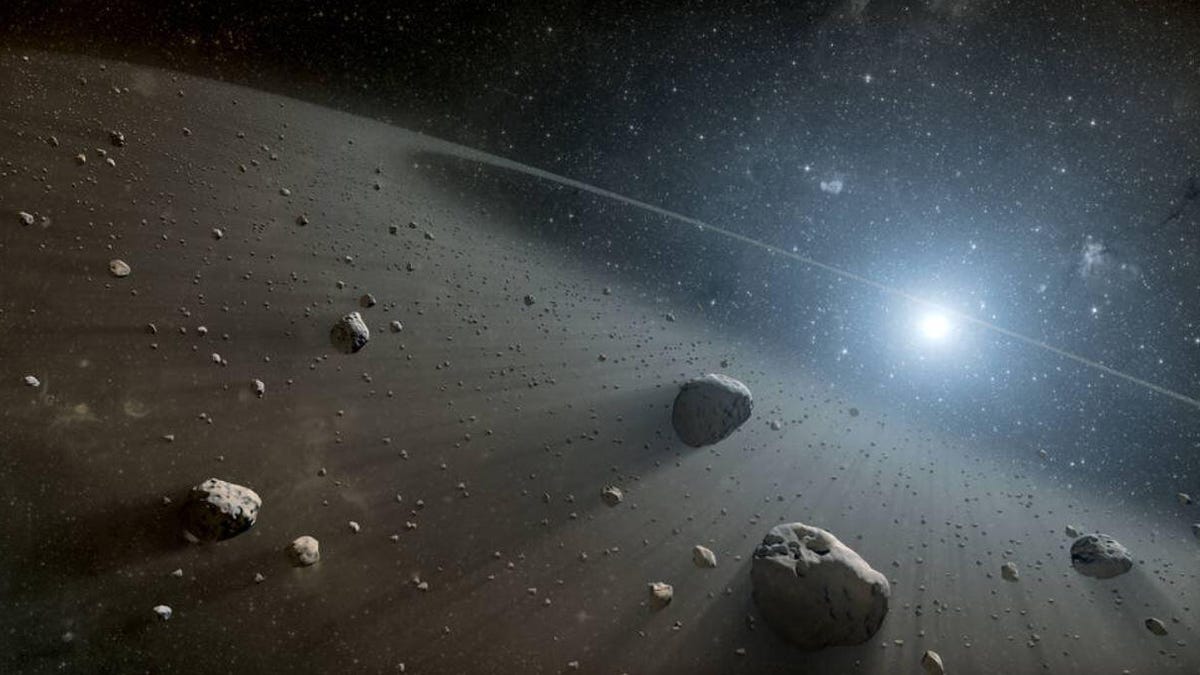An asteroid traveled from beyond Mars to explode over Earth
For a moment, some Canadian skies had a second, streaking moon on Tuesday.

An artist's rendering of asteroids in the asteroid belt.
The more we look, the more places we find asteroids -- whether it's in deep space, within the orbit of Venus or over our heads. The remains of yet another space rock now appear to be taking a permanent vacation on the floor of Lake Huron, which is located on the border of Michigan and Canada.
Peter Brown, a meteor scientist and planetary astronomer with the University of Western Ontario, reported some details on a particularly dramatic fireball that was spotted Tuesday night streaking across skies to the west of Toronto, toward the Great Lake's southeastern shores.
All-sky cameras at the university caught the bright meteor at 8:52 p.m. ET, moving slowly and nearly as luminous as the full moon:
Bright fireball last night at 8:52 pm EST to the North of London. Video below shot from @WesternU @westernuCRONYN. @amsmeteors #fireball #meteor 1/3 pic.twitter.com/vjfV11OAL2
— Peter Brown (@pgbrown) January 22, 2020
Meteor particles as small as pebbles or motes of dust can burn bright enough when they collide with our atmosphere to be seen from the ground. In the case of this fireball, Brown estimates the hunk of material was significantly larger -- perhaps the size of a softball.
An analysis of the fireball's trajectory suggests it was coming to the end of a very long journey.
"Fireball orbit from last night place origins firmly from the asteroid belt," Brown wrote on Twitter, adding that low velocity of about 33,554 mph (15 km/s) and end height 20.5 miles (33 kilometers) suggest "small meteorites may have landed, likely in Lake Huron."
The American Meteor Society also recorded at least 20 sightings of the same fireball from as far away as Rochester, New York, and Cleveland, Ohio.
While there are no reports of anyone ever taking a direct hit from a meteor, really big bolides do cause damage on the ground, like the 2013 Chelyabinsk meteor that released a window-shattering shock wave (it also landed in a lake).
So while there's not really much reason to worry, we should keep an eye to the sky, preferably via advanced telescopes that can help us spot truly dangerous space rocks like the one that did in the dinosaurs.

